Don’t go in blind when buying a solar battery — first understand these important fundamentals to help ensure you get the system you want (and need).
Battery Power Vs. Energy
When selecting a battery, both its power and its energy need to be specified. To help easily understand the difference, let’s use an analogy of a tank that’s ‘filled’ with electricity through a pipe.
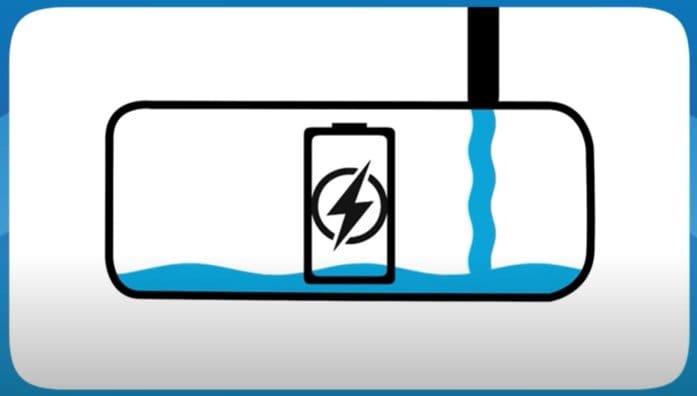
Power
The size of the pipe into the tank determines how fast the tank can fill (charge), or be emptied (discharge). A tank with a skinny pipe will fill or empty more slowly (low-power ) than one with a large pipe — a high-power battery.
A battery’s power is measured in kilowatts (kW).
Energy
But how big a battery is (the capacity of its tank) is determined by its kilowatt-hours (kWh) rating. The “hours” distinguishes energy from power.
Power And Energy Together
As an example, a Tesla Powerwall 3 is a 13.5 kWh, 10 kW battery.
- It stores 13.5 kWh of energy.
- It can discharge that energy at a maximum rate of 10 kW (power).
Some household loads may consume significant amounts of *energy* over an extended period, but also require a lot of *power* throughout, or at points during that period. For example, a large ducted air-conditioner as it cycles or a pool pump (very briefly) as it starts up.
So, if your aim is to minimise electricity from the mains grid, you also need to think about power and not just energy.
Battery Chemistry
10 years ago, if you wanted home battery storage, it would be based on lead-acid chemistry. You’d have a lot of these batteries, and they would require routine maintenance. These were mostly used by off-gridders.
But 2015 saw the dawn of the lithium-ion residential energy storage age, which offered:
- Better performance.
- Zero maintenance.
- Set-and-forget operation apart from an electrical checkup every few years.
- Longer lasting batteries.
- Cheaper per kilowatt-hour discharge.
- They don’t need their own shed!
Given the advantages, it’s little wonder lithium-ion tech blasted past lead-acid for residential energy storage, with the latter mostly being the domain of die-hard off-gridders these days.
The Main Chemistries: NMC And LFP
There are different types of lithium-ion chemistries, with the most common currently being:
- NMC – Nickel Manganese Cobalt
- LFP – Lithium-Iron Phosphate (aka LiFePO4)
LFP batteries are generally regarded as safer in terms of thermal runaway (catching fire) risk than NMC. However, SolarQuotes founder Finn Peacock says:
“I will stress any well-installed battery from a major manufacturer is safe. I’ve got NMC batteries on my house and I sleep fine at night.”
Connecting A Home Battery And Solar
Batteries store Direct Current (DC) electricity, and solar panels produce DC electricity. The cheapest and simplest way to hook up a battery to your home and solar system is via DC coupling. This only requires one inverter — a hybrid inverter — to convert the DC current into AC electricity suitable for use by appliances in your home, or export to the grid.
But you’re generally locked into whatever models the hybrid inverter is compatible with.
For greater choice, that’s where AC coupling comes into play; which requires separate battery and solar inverters. However, while providing a greater range of storage solutions, the AC coupling approach also costs significantly more.
Batteries And Electricity Plans
If you’re on a flat-rate electricity plan where the cost per kilowatt-hour for grid electricity doesn’t change no matter the time of day, the battery simply charges up from your solar panels during the day and it’s used instead of grid power overnight until discharged.
If you’re on a time-of-use (ToU) plan where grid electricity is usually significantly more expensive from 4pm to midnight and cheaper at other times, things should work a little differently.
While the battery will still charge from your solar panels during the day, it can also charge from cheap daytime electricity when there’s not enough solar to fill it — such as during winter, overcast days or when a solar system’s output is being used for charging an electric car. It can even charge up again after midnight on cheaper off-peak rates.
“But this behaviour is dependent on good battery control software,” says Finn. “Watch out for the cheap, ‘dumb’ batteries that don’t have the software to do this, and watch out for inexperienced installers who won’t configure your battery to save you the most money.”
More Information
If you’re keen on further detail, see Finn’s full guide to understanding home batteries, and its companion guides on buying and owning solar batteries. To see how various home energy storage solutions available in Australia stack up side-by-side on power, energy, features and price, see our home battery comparison page.
And when you’re ready to get quotes for good batteries that are properly installed and configured by installers who care, SolarQuotes can organise up to 3 quotes from trusted, pre-vetted installers.

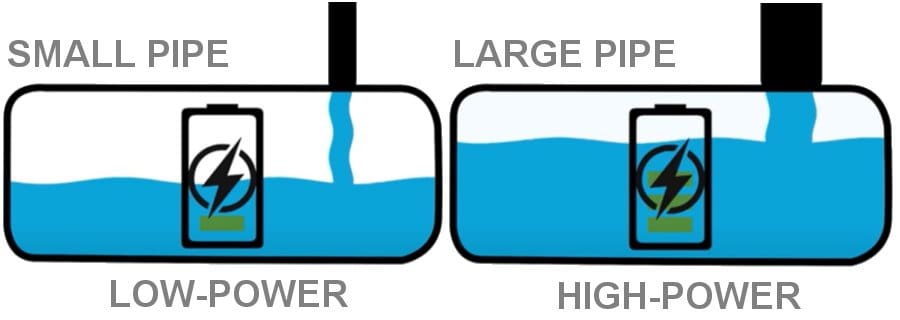
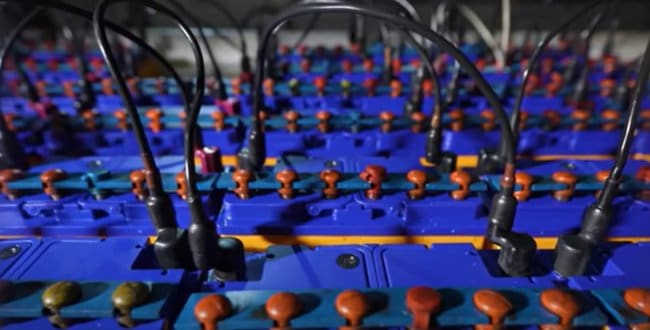
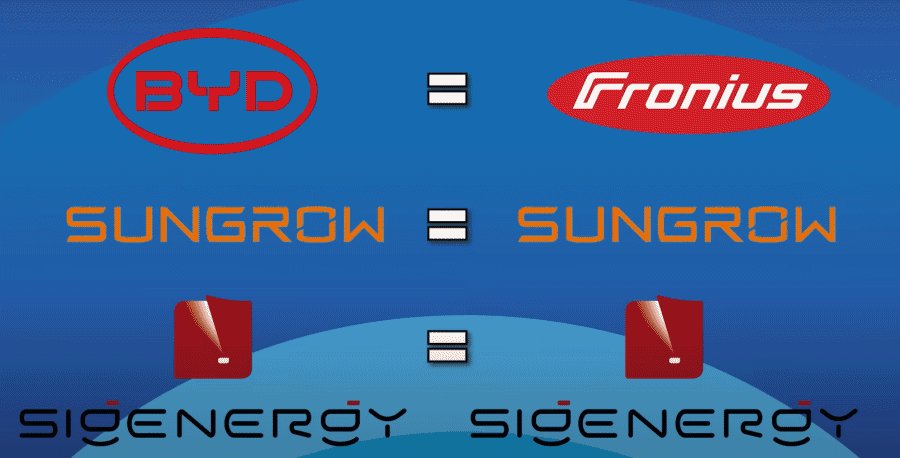
 RSS - Posts
RSS - Posts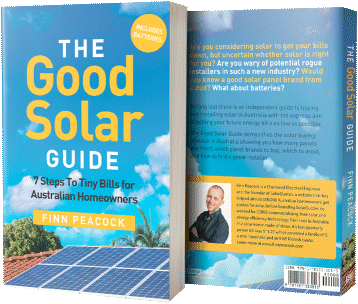


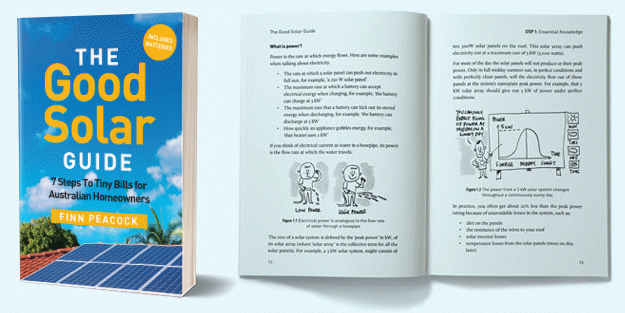
So Finn still has the older Powerwall 2 batteries then.
I suppose that is one of the problems of a fast moving technology that the product has a minimum 10 year life span. You are stuck with the old technology for a long time.
It will also be interesting to see how manufacturers (such as tesla) of single sized batteries maintain relevance in a market increasingly becoming mostly buyers of modular batteries.
That’s where the blog’s primary message; flexible software managing all the installed batteries, provides an answer. Any AC coupled batteries are intrinsically “modular” as soon as they are compatible with the app, allowing their energy to be dispatched as needed. Minimally, they just share the AC load, until reserve SoC is reached. Exploitation of midday “free hours” is next level optimisation.
On-grid, high power availability requires export limiting – easy enough. My brother has 25 kWh of batteries, 20 kW of inverters, and a 10 kW export limit. It’s been paying him for 5 years now – might break even one day.
There are many ways to achieve expandability, but export-limited inverters above 5 kW are key to adequate system utility, I suggest.
My three 15.5 kWh batteries, with individual BMSs, are simply parallelled, individually fused, so share load as internal resistance permits, resulting in varying cycle rates. There’s room for a 4th. Call it a “module” if you will.
yes, but i am talking modules as in 4 or 5kwh bricks that stack in the same footprint, not increments of whole batteries. 4 or 5kwh modules makes them far more adaptable to peoples budgets and needs, going in big chunks of 13 odd kwh at a time is not very flexible for people who just want to cover their daily usage for an average house. 13kwh is to small, 26kwh probably wouldn’t get below 50% charge most days.
I currently have 6.6kw and looking for another 6.6 with 15kw battery,
Ergon only offers 2 choices, fixed 1.5 kw, or Dynamic 1.5 to 10kw.
As the new unit would be in a different location it will be a separate inverter.
The question I have will they take the name plate data of both units ie 5 + 5 or only the new one? HENCE IT WOULD ONLY BE 1.5 TO KW UNDER DYNAMIC.
Tia
Frank
Thanks Finn, nice recap. For me when/if I get a home battery I’ll only consider LTO or maybe flow but with the demise of Redflow the latter is less available for home scale
It’s probably worth including a bit about round-trip efficiency – RTE.
RTE measures how much energy can be recovered from an energy storage system compared to the energy put into it during one complete charge-discharge cycle, expressed as a percentage.
With Tesla 2 batteries over the whole lifetime, I have charged 14.4 MWh and discharged 12.6 MWh, an RTE of 88%.
The higher the charge and discharge rates, the lower the RTE
That’s interesting, Thomas. Here, it’s 2597.6 DC kWh in, 2370.5 DC kWh out, giving 91% – about the same. If your figure is measured at AC, so including conversion losses, then it’s even better performance.
With 65 panels on the roof, and photons being free, my take is that the essential system figures of merit are battery capacity and cost. If the roof can charge fast enough, and the battery can hold enough for daily needs, losses are cost free. I.e. a cheaper battery with long cycle life can have lower RTE, but still provides better bang for the buck – and with zero emissions. WNTL?
The subsidy is one-shot, so I’d err a bit oversize, if able – for the climate.
Also, the 2.5 MWh is only 27% of the 9.3 MWh system production/consumption, so 9% loss on 27% is only 2.4% system operating loss. Inverter losses are greater, I figure.
And with the HWS indoors, 3.5 kWh nightly heat loss is recouped as room heating; battery & equipment heat also, though in the workshop. Nice on a cold day.
Where it can become relevant is for people who have excess battery capacity and are using Amber. They can charge their batteries at low cost in the morning and sell the electricity at higher cost in the afternoon. It is a small effect, I agree.
I use 18 MWh/yr and produce 11 MWh/yr via my solar panels. I have used all my available roof space. Upgrading to the latest panels would reduce the gap. This still leaves me with an electricity bill. For illogical reasons I want to reduce that to zero.
I have 3 Tesla 2 Powerwalls. I buy electricity at typically X cent/ kWh in the morning, where I have excess battery capacity, and sell it at 2X cent/ kWh in the afternoon (X varying by day but is typically 10 to 20 cent). Doing this I can break even financially.
I am not going to suggest this is a financially sound investment, batteries being expensive. However, the recent government subsidy helps. Of course, there is no guarantee that this difference in electricity pricing will continue
Ahhh, trading. Stuck off-grid, that aspect had slipped quietly by me. Then RTE does count. I understand that trading helps pay off an otherwise iffy (over)investment, cutting CO₂ emissions to boot. (Mine went oversize to avoid CO₂-emitting winter generator starts, and now powers a BEV doing rural trips, also CO₂-free – my only export opportunity.)
Could you erect a carport, for 6 kW more? That’d fill the production gap, I figure.
We’ll spend billions for decades, building grid storage – and then consume more energy, especially after the imminent AI bust recovers, and transport switches. Nothing’s guaranteed any more, not even sealevel or earthquake frequency & intensity – except for “interesting times” ahead. Even Gov now squints through fingers at an inevitable +2°C by 2035, +3°C before 2060:
https://www.youtube.com/watch?v=EYVKW04ukiY Skip 60 sec to table of 5 assessments. We go *much harder* from here on in, but not as hard as our children will, without option.
“I will stress any well-installed battery from a major manufacturer is safe. I’ve got NMC batteries on my house and I sleep fine at night.”
Interesting that this article was published on the 15th, then the day after this recall notice was issued by the ACCC:
“Tesla has identified certain lithium-ion battery cells from a third-party supplier in a subset of Powerwall 2 systems that may fail and overheat. Tesla has received reports of Powerwall 2 units with the affected battery cells smoking or emitting flames, resulting in minor property damage.”
Yes, I thought the assurance slightly courageous. The LG Chem immolation debacles, a few years ago, evidenced that safety in Li-Ion is a battle to limit the risk of thermal runaway, while still maximising capacity, and their goop was just that bit too energetic, apparently.
LFP has lower energy density, but no flammable electrolyte. It also has a significantly higher thermal runaway trigger temperature, so tends to be safer.
As LFP is also cheaper, has twice the cycle life, and is SoC insensitive, means I’d never consider Li-Ion as a viable indoor stationary battery.
OK, the safety statistics on solar Li-Ion batteries from reputable manufacturers are mostly good, but this engineer personally prefers to rely on physics more than statistics. Just sayin’, as the Americans so succinctly put it.
My house battery is automotive grade LFP cells made by EVE. They’d emit toxic smoke if caught in a house fire, but chances of starting one are seriously negligible, as I understand it.
“As LFP is also cheaper, has twice the cycle life, and is SoC insensitive, means I’d never consider Li-Ion as a viable indoor stationary battery.”
Fully agree. I have an NMC batteried (yes, that’s a word now) Tesla, and I’m glad I don’t have room in the garage for it. I sleep easier knowing its charging outside at least a few meters from the house.
“My house battery is automotive grade LFP cells made by EVE. They’d emit toxic smoke if caught in a house fire, but chances of starting one are seriously negligible, as I understand it.”
Mine too, including the EVE cells. Mine is in the garage with an interlinked smoke alarm mounted directly above the battery stack.
I have 22 of 270W Trina Panels, 8 years old, and10 LG Neon R 375W Panels, 5 years old. Upgrading to the latest panels would increase my output from 11 MWh to 15 MWh, compared to a usage of 18 MWh- good for the environment. But I have a guideline that I should use panels for 10 years before replacement. (I replaced my first 170W panels after 11 years). The longer panels are used, the better for the environment. There is a pollution cost in their manufacture and a disposal cost. Or you could be reducing CO2 emissions now.
There is another factor which many people are unaware of. Doubling a technology’s installed base reduces costs by a specific percentage, typically 20 to 30%. This is Wright’s Law or the experience curve effect. For solar technology it is 20% for every doubling of global capacity. Just as each user of solar panels reduces CO2 emissions by a tiny, but important amount, so each panel we buy reduces the cost of future panels, hastening the uptake of the technology.
Here’s something those in NSW need to know about battery’s, The NSW Gov is specifying that the PDRS VPP rebates are up to $1500 for a 27kwh battery…..
The reality is that the rebate after being processed by MAC energy, the NSW Gov appointed gatekeeper, who it seems doesn’t actually have any competition in its role of gatekeeper, that the $1500 shrinks somewhat to $848 max…. meanwhile, everyone, everywhere keeps referring to the mythical $1500….. what a scam….. if I knew that I would have simply ignored the NSW VPP pdrs scheme altogether added another 8kwh on my battery ignoring the nsw 28kwh limit and got fed gov rebate on that extra module…..
and the salt in the wound…..its all approved now weeks after submission and I merely have to wait 60 days for payment…. cause you know 30% off the top to shuffle papers around and ask owners questions in the process that proves there are no tech people in the loop (too expensive)….isn’t enough we want evenmooorrrreeee!!